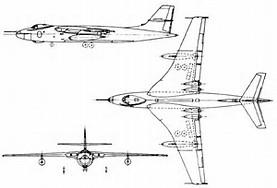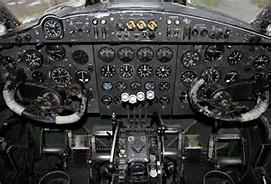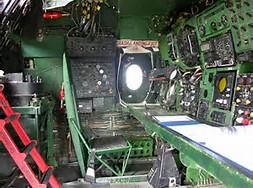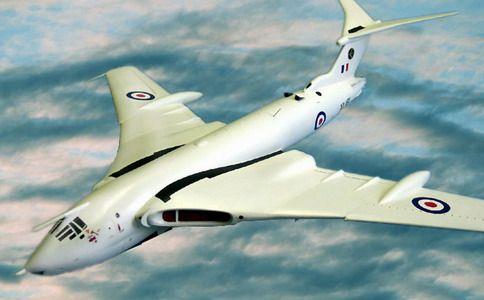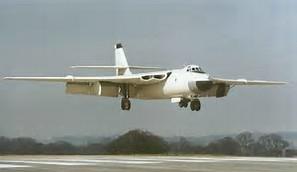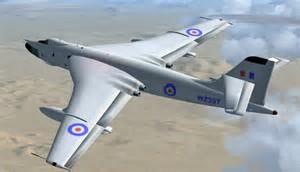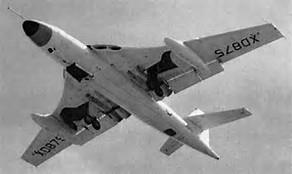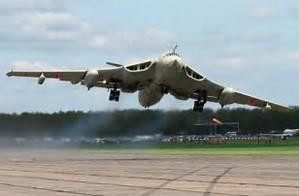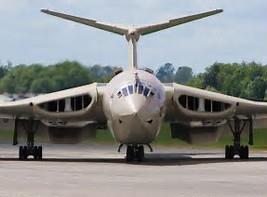S'sonic
Stealth
Menu
A free template by Lucknowwebs.com for WYSIWYG WebBuilder 8
Powered by Sispro1-S
Nigel G Wilcox
Paragon Of Space Publication
© Copyright Reserved - United Kingdom
Ideal Screen Composition 1024 x 768
SITEMAP
PSEUDO SCIENCE
SCIENCE RESEARCH
ABOUT
Desk
Supersonic
Stealth
Study
Menu
MAIN INDEX
Fastest Air Planes
Space
Transport
Menu
http://military.wikia.com/wiki/SEPECAT_Jaguar?file=Cockpit_of_Jaguar_GR.3A.jpg
Vickers Valiant
The Vickers-Armstrongs Valiant was a British four-jet high-altitude bomber, once part of the Royal Air Force's V bomber nuclear force in the 1950s and 1960s. It was developed by Vickers in response to Specification B.35/46 issued by the Air Ministry for a nuclear-armed jet-powered bomber. The Valiant was the first of the V bombers to become operational, and was followed by the Handley Page Victor and the Avro Vulcan; it was noticeably less advanced than its counterparts. The Valiant has the distinction of being the only V bomber to have dropped live nuclear weapons.
Maximum speed: 912.50 km/h (567 mph) Range: 4,502 mi Maiden flight: 18 May 1951 Length: 108.23 ft Wingspan: 114.34 ft Retired: Jan 1965
General Characteristics
Variant : Type 660/667 B.1 B(PR).1 B(PR)K.1 BK.1 B.2
First flight : 18th May 1951 21st Dec 1953 8th Oct 1954 30th Jan 1956 8th May 1956 4th Sep 1953
Crew: Five - pilot, copilot, tactical navigator, radar operator and air electronics officer.
Armament: None One Blue Danube nuclear bomb, or two Red Beard tactical nuclear bombs, or up None; would have been
to four US Mk.28 or Mk.43 tactical nuclear bombs, or twenty-one 1,000lb bombs; 6,000 lb of target markers
PR versions carried cameras and K versions could carry flight-refuelling hose/reel
pack in bomb bay
Powerplant
4 6,500 lb RR RA3 Avon turbojets, 4 9,000 lb RR RA14 Avon or 4 10,500 lb RR RA28 Avon 204/205s 4 9,000 lb RR Avon RA14
(intended to have 4 RR RB80 -
Conways)
Max. speed: ? 0.82; 414 mph at sea level, 567 mph at 30,000 ft 552 mph at sea level
Service ceiling: ? 54,000 ft (16,460 m) ?
Range: 3,450 miles (5,550 km) or 4,500 miles with underwing tanks
Empty weight: ? 75,881 lb ?
Max. take off weight: ? 175,000 lb ?
Wing span: 114 ft 4 in (34.85 m) ?
Wing area: 2,362 sq ft (219.43 sq m) ?
Length: 108 ft 3 in (32.99 m) 112 ft 9 in
Height: 32 ft 2 in (9.80 m) ?
Production :
(total 107) 2 (1 type 600, 1 type 667) 35 11 14 44 1
Designed in response to the same specification that also eventually produced the Avro Vulcan and Handley Page Victor, the Valiant had an uncertain start to life. Vickers had been working on jet bomber designs since 1944 but with little interest from the government. With the end of the Second World War, however, interest in a jet bomber was reawakened. The B.35/46 specification issued by the Ministry of Supply called for a bomber capable of carrying a 10,000 lb bomb, travelling at 500 knots and at 50,000 ft, with a range of over 3,300 nautical miles. This was a substantial jump in capability over the piston-engine designs then current (though the U.S. was forging ahead with bombers equal to this capability). Vickers had a design that fell short of satisifying this specification and when Avro and Handley Page made submissions that satisfied it, the Vickers project looked doomed to be a paper aeroplane only.
WB210, the first prototype; Rolls-Royce
However, Vickers' chief designer, George Edwards, fought with the government for the chance to build the Vickers design, arguing that it was simpler and less likely to suffer failure or delay when compared with the riskier Avro and Handley Page designs. He succeeded, and the Vickers Type 660 was allowed to proceed, with a new specification being written around it (B.9/48) and issued in July 1948. Design work had really begun in April of that year and by February 1949 the Ministry of Supply ordered two prototypes. Two years later the Ministry felt confident enough to allow Vickers to proceed with the manufacture of 25 production aircraft; by April 1951 the order was official placed. The first type 660, WB210, flew on the 18th of May 1951, flown by Vickers' chief test pilot 'Mutt' Summers and 'Jock' Bryce.
A conventional high wing design looking somewhat graceless compared to the Vulcan and Victor, it was however a clean design and from many angles appeared to be lacking any form of powerplant at all. The engines were actually four Rolls-Royce Avons buried in the wing roots; the intakes were thin slots in the leading edge of the wing. In June 1951 the name of Valiant was chosen for the new aircraft; the idea of having each of the new bombers given a name beginning with 'V' broke the long standing tradition of naming bombers after UK & Commonwealth cities - e.g. Lancaster and Halifax. The first prototype was lost in a crash on 12th January 1952. The flight was to measure cabin noise with the two inner engines shut down. After difficulties restarting the starboard inboard engine, unknown to the crew, fuel had pooled around the jet pipes. This fuel was ignited when the engine was successfully restarted (on the fourth attempt) and a fire spread to the wing structure via the flap area. The crew only became aware when control was beginning to be lost as no fire indicators were present in the areas on fire and the engine temperatures remained normal. Only the leading edge of the wing was visible from the cockpit and when fire was seen coming from this area it was clear they had a fire of catastrophic proportions and so the crew abandoned the aircraft, shortly before the wing exploded and the aircraft broke up. Crew escape, in common with the other two V-bombers, was a mixed affair. The two pilots had ejection seats (the canopy being blown off before ejection) but the rear crew had to bale out via the crew hatch on the port side of the nose. This was however substantially easier than on the Vulcan (no nose gear to hit) and the Victor (the Valiant crew door being much lower than the engine intakes). Unusually, the only casualty of this crash was the co-pilot, Squadron Leader Brian Foster (an RAF officer attached to Vickers for Valiant testing) - he struck the tailfin and received fatal injuries.
Valiant production ceased in 1957 with just over one hundred examples produced (compare with over 2,000 B-47s produced in the US). The next big step in the upgrading of the V-Force's offensive capability also took place in 1957. In March 1957, four 49 Squadron Valiants were detached to Christmas Island in the Pacific. On the 15th of May, Valiant B.1 XD818 released a prototype hydrogen bomb at 39,000 ft over Malden Island. At 15,000 ft the weapon detonated, but it underperformed badly, producing only around a third of the expected megaton (million tons of TNT). Another drop later in the year would see a yield of 1.8 megatons, and 1958 brought yields of 3 megatons. The V-Force finally had the kind of nuclear weapon that both the USA and the USSR had had for the past two years. Now that the point had been proved and the UK could produce nuclear weapons just like the US and USSR, further tests and development of nuclear weapons were carried out in cooperation with the Americans and the V-Force would become part of the integrated NATO nuclear force.
While Bomber Command's Development Unit pioneered the V-Force techniques of mass scrambles and rapid starts with the Valiant, the Valiant also helped with development of a programme not generally associated with the aircraft - Blue Steel. A stand-off nuclear missile designed for use with the Victor and Vulcan, Blue Steel was not to be carried by the Valiant in a rare example of officialdom having a bit of sense and not trying to have the entire V-Force have all of it's capabilities available in triplicate. The Valiant did however carry 2/5 scale versions of the Blue Steel and dropped them to test the aerodynamic properties of the missile. These smaller versions were not just dumb models but included a rocket engine so were used not only in Blue Steel development but also to give crews a taste of what firing the real thing would be like. When the full-size weapon was available a Vulcan took over the testing role, to be joined by more Vulcans and Victors later on.
On the 6th of August 1964, the crew of WP217 of 232 OCU felt what appeared to be a large impact when flying a training mission. With multiple warnings indicated, the crew elected to try and land their stricken aircraft. Incredibly, with the starboard wing's rear spar seriously fractured (so much so that the wing was noticeably sagging), a successful landing was made. The RAF and Vickers had already begun inspecting Valiant spars before this incident, after Vickers had found fractures in Viscount spars (made from the same alloy). After the WP217 incident an emergency spar inspection programme was put into place and the enormity of the problem was soon apparent - the majority of Valiants had significant stress fractures. Low level operations ceased immediately and other operations were seriously restricted while the cost of repairing or replacing the fatigued spars was looked into. With two other V-Force bomber types performing well, the cost of refurbishing the Valiant fleet was simply too high, and the Valiant force was grounded completely in early December. The entire fleet was retired in short order, with the OCU being first to disband and the last Valiant squadron, 49 Squadron, being disbanded in January 1965.
The RAF was suddenly without its tanker force and Victors were hurriedly pressed into service in this role to replace the lost Valiants. Of the Valiants, most were scrapped at their bases very quickly after the disbanding of their operating squadrons. Others became fire training airframes, being burnt quickly, or 'damage to aircraft' targets. Several remained in flying condition, being on loan to what was now the British Aircraft Corporation (incorporating Vickers) for various flight test purposes. A single example was earmarked for preservation, and was appropriately enough XD818 - the Valiant that dropped the UK's first hydrogen bomb. Once BAC had finished with their four Valiants, they were stored for a while and then finally scrapped, though not before one of them, XD816, had taken part in the flypast on the 29th of April 1968 to mark the disbandment of RAF Bomber Command (which was now becoming Strike Command). The final remaining Valiant, XD818, stood guard at RAF Marham for many years before being moved to the RAF Museum at Hendon. More recently it has been moved once again, to its permanent home in the National Cold War Exhibition at the RAF Museum at Cosford.
Role: Strategic bomber or aerial refueling tanker
Manufacturer: Vickers-Armstrongs
Designer: George Edwards
First flight: 18 May 1951
Introduction: 1955
Retired: January 1965
Status: Retired
Primary user: Royal Air Force
Produced: 1951-1957
Number built: 107
Unit cost: £300,000-400,000



